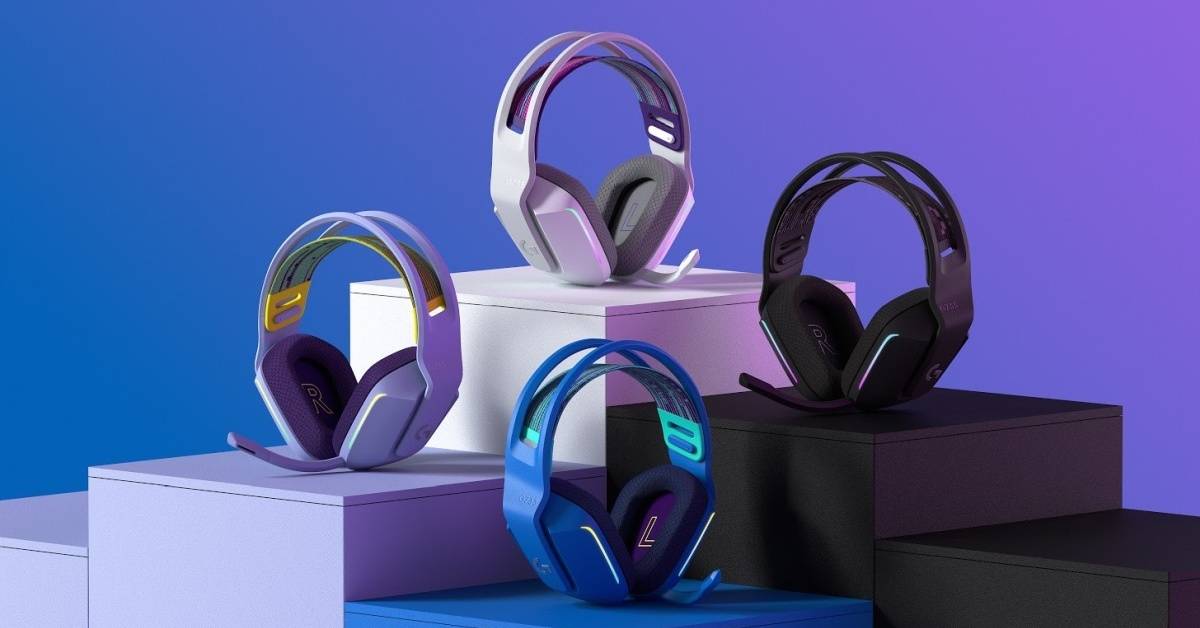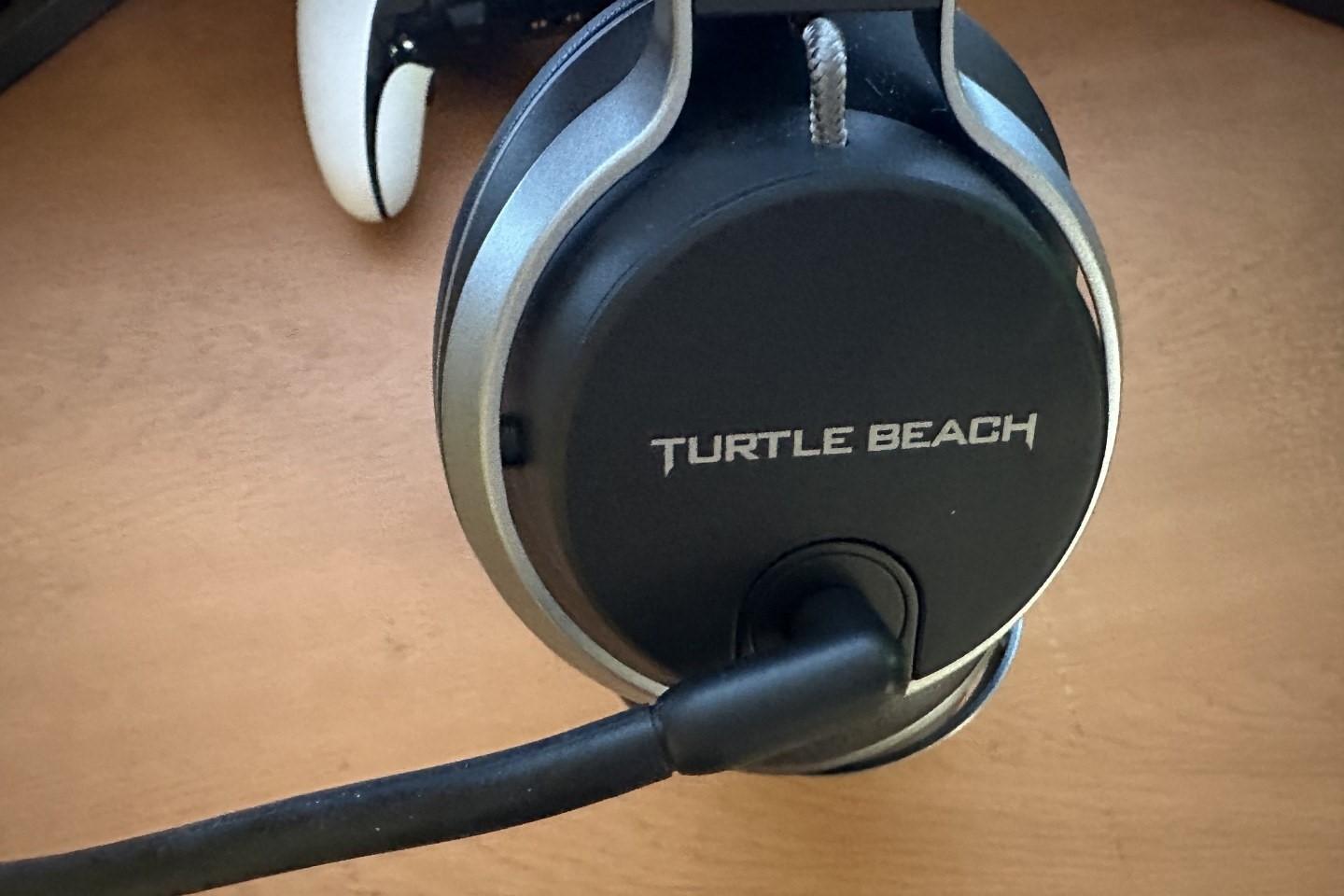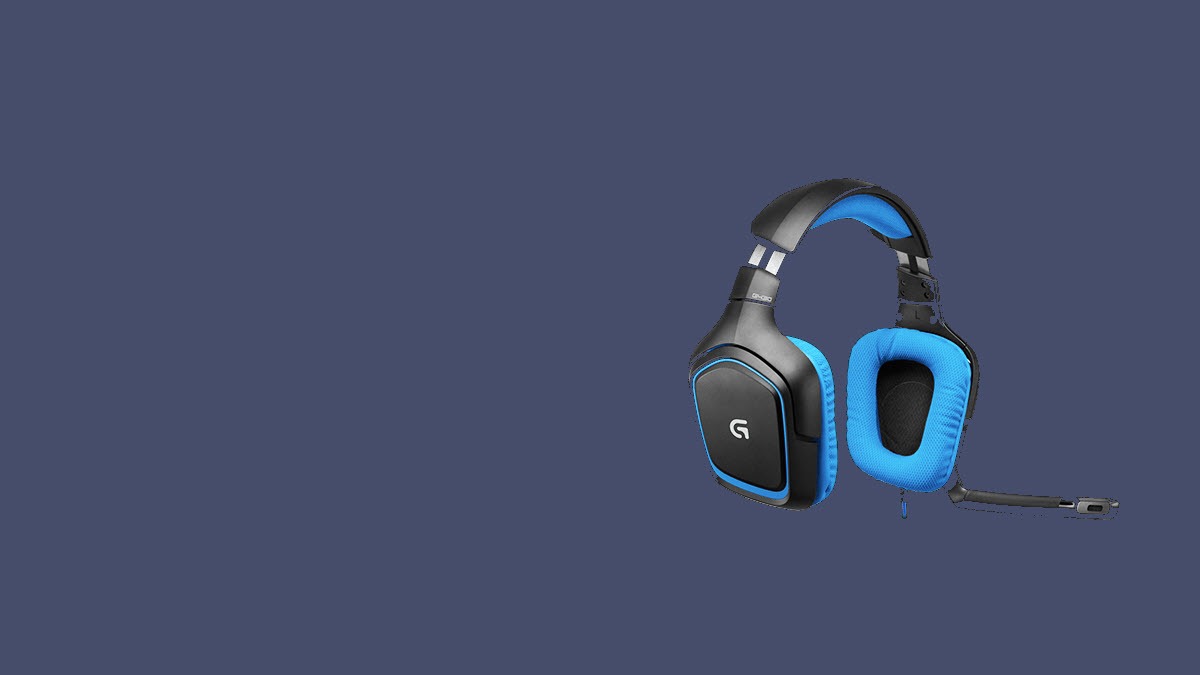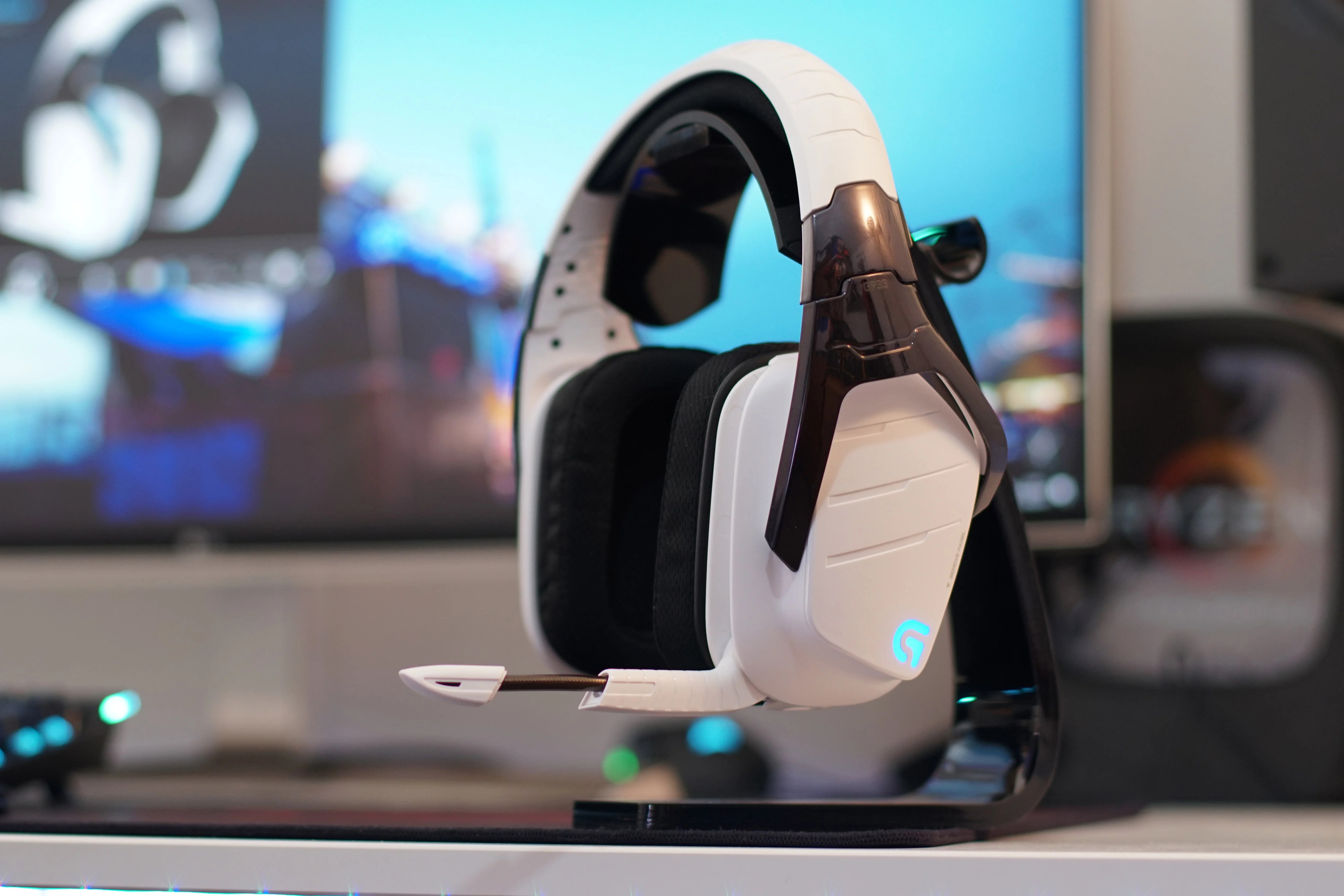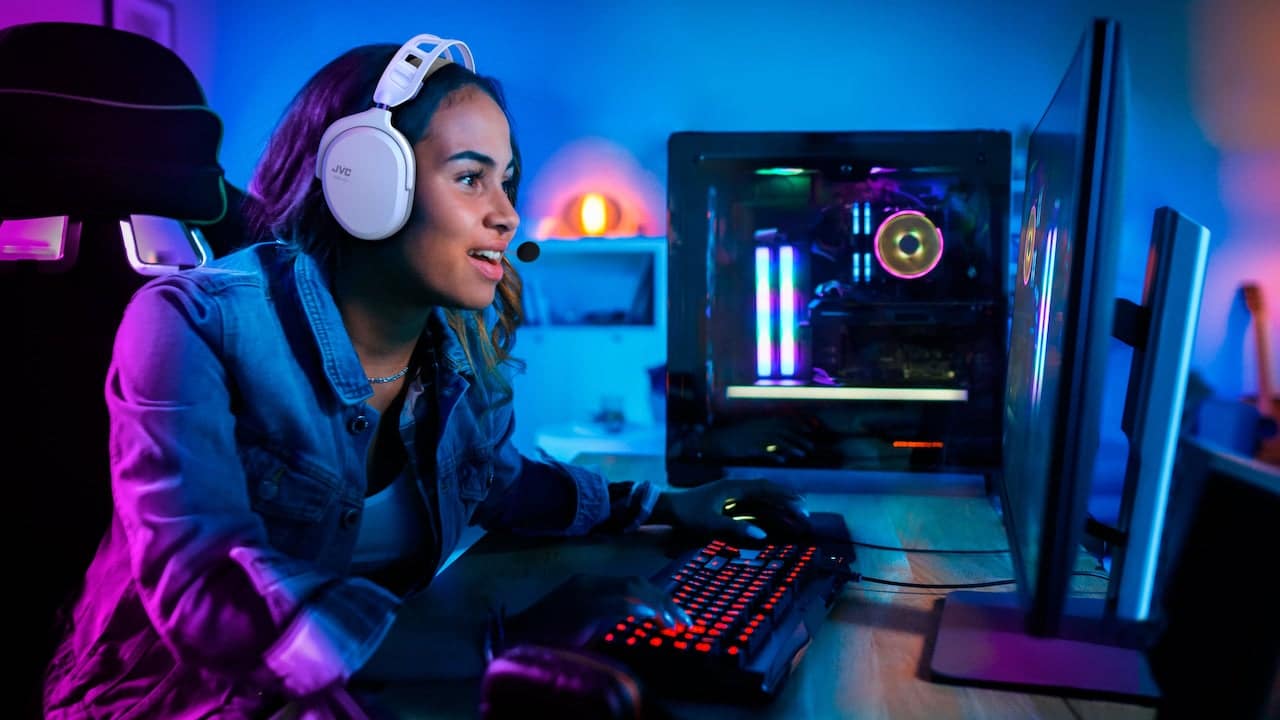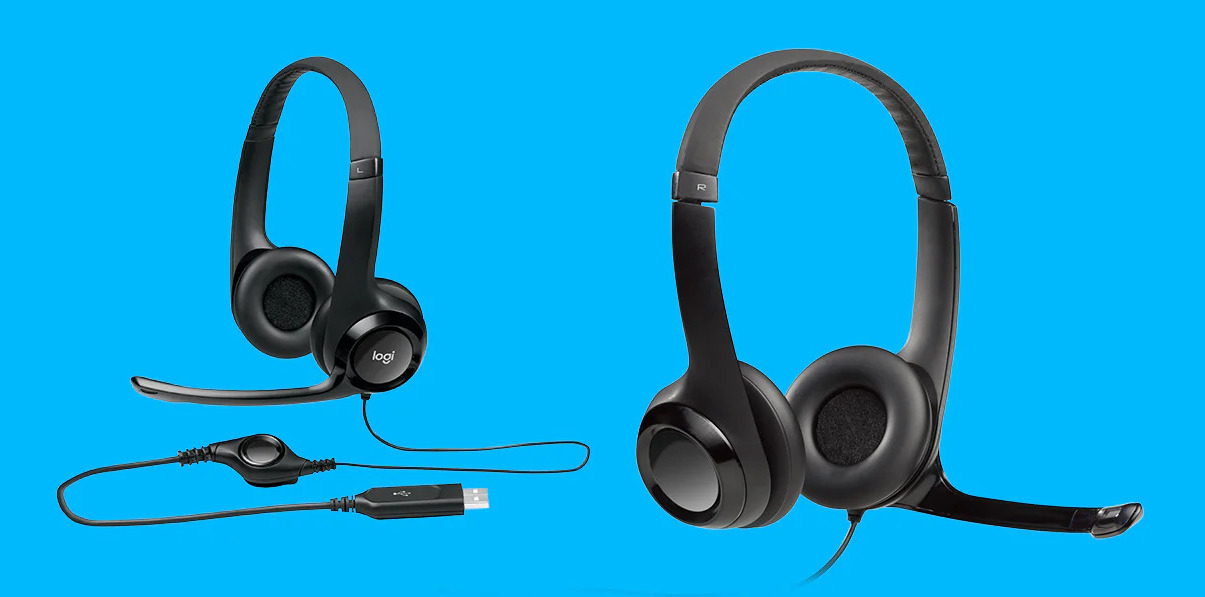Introduction
Dealing with microphone issues can be a frustrating experience, especially when you're in the middle of an important video call or trying to record a podcast. Logitech microphones are known for their quality and reliability, but like any technology, they can encounter glitches from time to time. Whether you're using a Logitech headset, standalone microphone, or webcam with a built-in mic, troubleshooting the problem can help you get back to seamless communication and content creation.
This guide will walk you through the steps to troubleshoot and resolve common microphone issues with Logitech devices. From checking hardware connections to updating audio drivers, we'll cover a range of solutions to help you identify and fix the problem. By following these steps, you can potentially save time and frustration, and get your Logitech microphone working as intended.
So, if you've encountered distorted audio, no sound input, or other microphone-related issues with your Logitech device, don't fret. With a systematic approach and the right troubleshooting techniques, you can often pinpoint the root cause of the problem and implement the necessary fixes. Let's dive into the troubleshooting process and get your Logitech microphone back in action.
Check Hardware Connections
The first step in troubleshooting Logitech microphone issues is to ensure that all hardware connections are secure and properly configured. Even a minor disconnection or loose cable can lead to audio problems. Here's how to systematically check the hardware connections for your Logitech microphone:
-
Physical Inspection: Start by visually examining the physical connections of your Logitech microphone. If it's a standalone microphone, check the cable for any signs of damage, such as fraying or kinks. For Logitech headsets or webcams with built-in microphones, inspect the connection points where the headset or webcam interfaces with your computer or other devices.
-
USB or Audio Jack: If your Logitech microphone connects via USB or audio jack, ensure that the connection is snug and secure. Sometimes, USB ports or audio jacks can become loose over time, leading to intermittent connectivity issues. Try plugging the microphone into a different USB port or audio jack to rule out potential port-related problems.
-
Device Compatibility: Verify that your Logitech microphone is compatible with the device you're using. Some Logitech microphones may require specific drivers or software to function correctly with certain operating systems. Check Logitech's official website for compatibility information and any necessary software updates.
-
Power Source: If your Logitech microphone requires a power source, such as a battery or USB power, make sure it's adequately powered. Low battery levels or insufficient power can result in erratic microphone behavior and audio issues.
By thoroughly examining and ensuring the integrity of the hardware connections, you can eliminate potential physical causes of microphone malfunctions. Once you've confirmed that the hardware connections are secure, you can proceed to the next troubleshooting steps to further diagnose and resolve Logitech microphone issues.
Adjust Microphone Settings
After verifying the physical connections, the next crucial step in troubleshooting Logitech microphone issues is to adjust the microphone settings on your computer or device. Often, incorrect settings or misconfigurations can lead to distorted audio, low volume, or complete microphone failure. By carefully adjusting the settings, you can potentially resolve the issue without the need for complex repairs or replacements.
Here's a systematic approach to adjusting the microphone settings for your Logitech device:
-
Access Sound Settings: Begin by accessing the sound settings on your computer or device. On Windows, you can right-click the speaker icon in the taskbar and select "Open Sound settings." On Mac, go to "System Preferences" and click on "Sound." For other devices, refer to the specific operating system or software documentation for accessing sound settings.
-
Select Input Device: Once in the sound settings, navigate to the input or recording tab to view available input devices. Ensure that your Logitech microphone is selected as the default input device. If it's not the default device, select it from the list and set it as the primary input source.
-
Adjust Input Levels: Check the input levels for the Logitech microphone. Ideally, the input level should be set to an appropriate volume to capture clear audio without distortion. Test the microphone by speaking into it and observe the input level meter. Adjust the input level slider to achieve optimal audio input without peaking or being too low.
-
Enhancements and Effects: Some sound settings may offer enhancements or effects for input devices. Disable any unnecessary enhancements or effects that could interfere with the microphone's performance. These enhancements, if misconfigured, can lead to undesirable audio quality or malfunctioning of the microphone.
-
Check Privacy Settings: In modern operating systems, privacy settings can impact the functionality of input devices, including microphones. Ensure that the necessary permissions are granted for applications to access the microphone. Review the privacy settings and grant permissions to the relevant applications that require microphone access.
-
Test Recording: After adjusting the microphone settings, perform a test recording or use an application that utilizes the microphone. Record a short audio clip or engage in a video call to assess the performance of the Logitech microphone. Listen to the recorded audio or gather feedback from the other party to determine if the adjustments have resolved the issues.
By meticulously adjusting the microphone settings and paying attention to input levels, device selection, and privacy settings, you can often rectify common Logitech microphone issues related to audio quality and functionality. If the issues persist despite adjusting the settings, proceed to the next troubleshooting steps to further diagnose and address the problem.
Update Audio Drivers
Ensuring that your audio drivers are up to date is a crucial step in troubleshooting Logitech microphone issues. Audio drivers serve as the communication bridge between your operating system and the hardware components, including your Logitech microphone. Outdated or corrupted audio drivers can lead to various audio-related problems, including microphone malfunctions. By updating the audio drivers, you can potentially resolve compatibility issues, software conflicts, and performance-related concerns.
Here's a detailed guide on updating the audio drivers for your Logitech microphone:
-
Identify the Audio Device: Begin by identifying the specific audio device associated with your Logitech microphone. This can typically be found in the Device Manager on Windows or the System Information utility on Mac. Look for the audio device name or model number that corresponds to your Logitech microphone.
-
Access Device Manager (Windows): On Windows, you can access the Device Manager by right-clicking the Start button and selecting "Device Manager" from the menu. In the Device Manager window, expand the "Audio inputs and outputs" or "Sound, video and game controllers" category to locate the Logitech microphone or associated audio device.
-
Check for Driver Updates: Right-click on the Logitech microphone or audio device and select "Update driver." Choose the option to search automatically for updated driver software. Windows will then initiate a search for the latest driver updates for the selected audio device. If updates are found, follow the on-screen instructions to install them.
-
Visit Manufacturer's Website (Optional): If Windows does not find updated drivers or if you prefer to manually update the drivers, visit the official website of Logitech. Navigate to the support or downloads section and search for the latest audio drivers specific to your Logitech microphone model. Download the appropriate driver package for your operating system.
-
Install Updated Drivers: After downloading the updated audio drivers, follow the installation instructions provided by Logitech. This typically involves running the driver installer and following the on-screen prompts to complete the installation process. Ensure that you restart your computer if prompted to finalize the driver update.
-
Verify Driver Installation: Once the updated drivers are installed, verify their successful installation in the Device Manager. Check the properties of the Logitech microphone or associated audio device to confirm that the driver version and status reflect the newly installed updates.
By updating the audio drivers for your Logitech microphone, you can address potential software-related issues that may be impacting its performance. Updated drivers often include bug fixes, compatibility improvements, and optimizations that can enhance the functionality and stability of the audio input devices. If the microphone issues persist after updating the drivers, proceed to the next troubleshooting steps to further diagnose and resolve the problem.
The process of updating audio drivers is an essential maintenance task that can contribute to the overall stability and performance of your Logitech microphone and other audio devices. Regularly checking for driver updates and staying current with the latest software releases can help mitigate potential audio-related issues and ensure a seamless user experience with your Logitech devices.
Test Mic on Another Device
Testing your Logitech microphone on another device is a crucial step in the troubleshooting process, as it helps determine whether the issue is specific to a particular computer or device. By connecting the microphone to an alternative device, such as another computer, laptop, or mobile device, you can assess its functionality in a different environment. This method allows you to isolate the potential causes of the microphone issues and gain valuable insights into the nature of the problem.
To test your Logitech microphone on another device, follow these steps:
-
Select an Alternative Device: Choose a secondary device that is compatible with your Logitech microphone. This could be a friend's computer, a family member's laptop, or any other device that supports the connection and usage of an external microphone. Ensure that the alternative device has the necessary input ports or USB connectivity to accommodate your Logitech microphone.
-
Connect the Microphone: Use the appropriate cable or adapter to connect your Logitech microphone to the selected alternative device. If your Logitech microphone utilizes a USB connection, simply plug it into an available USB port on the alternative device. For microphones with audio jacks, use the corresponding input port on the alternative device.
-
Configure Input Settings: Once the microphone is connected to the alternative device, access the input or recording settings to ensure that the device recognizes the Logitech microphone as the primary input source. Adjust the input levels and verify that the microphone is set as the default recording device on the alternative device.
-
Test Audio Input: Initiate a test recording or utilize an application that utilizes the microphone input on the alternative device. Speak into the Logitech microphone and observe the audio input levels. Listen to the recorded audio or engage in a voice call to assess the quality and functionality of the microphone on the alternative device.
-
Evaluate Performance: Assess the performance of the Logitech microphone on the alternative device. Pay attention to the clarity of the audio, the absence of distortion or static, and the overall functionality of the microphone. If the microphone performs as intended on the alternative device, it suggests that the issue may be related to the original device or its settings.
By testing your Logitech microphone on another device, you can gather valuable information about the nature of the microphone issues. If the microphone functions properly on the alternative device, it indicates that the problem may be associated with the original computer or device, including its settings, drivers, or hardware configurations. Conversely, if the microphone exhibits similar issues on the alternative device, it suggests that the problem may be inherent to the microphone itself, prompting further troubleshooting or potential warranty support from Logitech.
Testing the Logitech microphone on another device serves as a critical diagnostic step, allowing you to narrow down the potential causes of the issues and make informed decisions regarding the next troubleshooting actions. Whether the microphone performs flawlessly or exhibits similar problems on the alternative device, the insights gained from this testing process can guide you towards an effective resolution for the Logitech microphone issues.
Contact Logitech Support
If you've exhausted the troubleshooting steps and your Logitech microphone issues persist, reaching out to Logitech Support can provide valuable assistance and guidance. Logitech offers dedicated customer support channels to address technical concerns, provide product-specific troubleshooting, and facilitate potential warranty-related solutions. By engaging with Logitech Support, you can leverage the expertise of their technical team and access resources tailored to resolving microphone issues.
Here's how you can initiate contact with Logitech Support and benefit from their assistance:
-
Official Logitech Website: Visit the official Logitech website and navigate to the support or contact section. Logitech provides comprehensive support resources, including knowledge bases, FAQs, and community forums where users can seek assistance and share experiences related to Logitech products. The website may also feature live chat support options for real-time interaction with Logitech representatives.
-
Product Registration Information: If you've registered your Logitech microphone or headset, accessing the support options through your registered account can streamline the support process. Logitech often provides personalized support for registered products, allowing for efficient troubleshooting and potential warranty-related inquiries.
-
Technical Support Hotline: Logitech offers a technical support hotline where users can directly connect with support representatives to discuss product-related issues. The hotline is an effective channel for seeking immediate assistance, especially for complex technical concerns that require real-time troubleshooting guidance.
-
Email Correspondence: Utilize Logitech's official email support channels to submit detailed inquiries about your microphone issues. When reaching out via email, provide specific details about the problem, including the model of the Logitech microphone, the troubleshooting steps you've already taken, and any relevant error messages or symptoms you've observed.
-
Social Media Platforms: Logitech may have a presence on various social media platforms, where users can engage with the brand and seek support. Direct messaging or commenting on Logitech's official social media accounts can sometimes lead to responsive support interactions.
When contacting Logitech Support, it's beneficial to have relevant information readily available, such as the model and serial number of your Logitech microphone, details of your computer or device setup, and a clear description of the issues you're experiencing. Providing a comprehensive overview of the problem can expedite the troubleshooting process and enable the support team to offer targeted assistance.
By engaging with Logitech Support, you can tap into the expertise of the company's technical resources and potentially uncover solutions that address your microphone issues. Whether it involves software configurations, hardware diagnostics, or warranty-related considerations, Logitech Support is dedicated to helping users maximize the performance and functionality of their Logitech products.
Reaching out to Logitech Support demonstrates your commitment to resolving the microphone issues and harnessing the full potential of your Logitech device. The support team's insights and recommendations can be instrumental in achieving a positive outcome and restoring the seamless functionality of your Logitech microphone.







